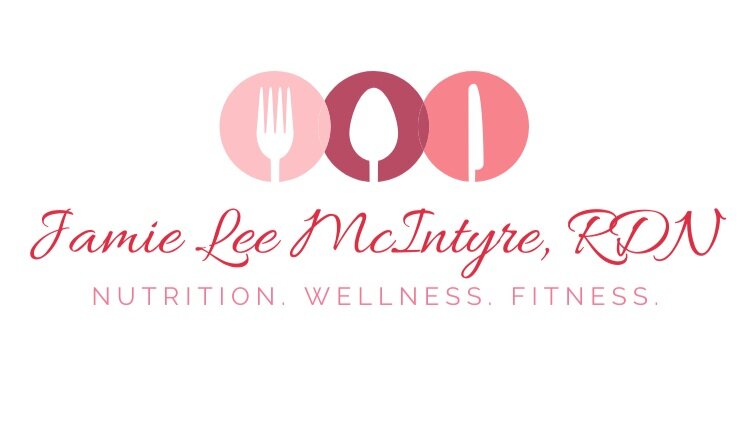Diabetes Meal Planning Made Simple: How to Use the Plate Method for Better Blood Sugar Control
Being diagnosed with diabetes can feel overwhelming — especially when it comes to meal planning. But here’s the good news: a healthy diabetes meal plan doesn’t have to be complicated or restrictive. In fact, the way people with diabetes are encouraged to eat is very similar to what is recommended for everyone to support good blood sugar control and overall health.
A common misconception is that a diabetes-friendly diet means cutting out carbs, sugar, or starches completely. This simply isn’t true. Carbohydrates play an important role in fueling your brain and body — the key is choosing high-quality, fiber-rich carbs and balancing them with protein and healthy fats.
Yes — you can still enjoy cookies, cake, or chips! The focus should be on portion control and frequency. Think of it this way: eat large, frequent portions of foods that work well in your body (like vegetables, whole grains, lean proteins), and smaller, occasional portions of foods that don’t (like sweets and fried snacks).
What Is the Plate Method?
There are several ways to approach diabetes meal planning — including carbohydrate counting and the diabetes exchange system — but one of the easiest and most flexible methods is the Plate Method.
The Plate Method helps you visualize balanced portions and get the right mix of carbohydrates, protein, and fat at each meal. Here’s how it works:
Use a 9-inch plate.
Fill half the plate with non-starchy vegetables. Think leafy greens, broccoli, peppers, zucchini, or cauliflower.
Fill ¼ of the plate with a lean protein source. Options include skinless poultry, fish, lean beef or pork, tofu, or eggs.
Fill the final ¼ with a fiber-rich carbohydrate. Choose whole grains, beans, or starchy vegetables like sweet potatoes or corn.
Add a small amount of healthy fat. Drizzle 1–2 tablespoons of olive oil, sprinkle nuts or seeds, or add avocado — being mindful of portion size since fats are calorie-dense.
This approach ensures your body gets the right amount of carbs — not too much, not too little — and helps prevent blood sugar spikes.
Choosing the Right Carbohydrates
Even though carbohydrates raise blood glucose, choosing slow-digesting carbs can keep blood sugar levels steady. Opt for:
Whole grains: brown rice, quinoa, oats, farro, whole wheat bread/pasta
Beans and lentils
Fruits with skins: apples, pears, berries
Vegetables: especially high-fiber, non-starchy options
Pair carbs with protein and healthy fat to slow digestion and blunt blood sugar spikes.
How Snacks Fit Into a Diabetes Meal Plan
Snacks are important when meals are spaced more than 5 hours apart. A balanced snack should include:
One high-fiber carbohydrate (like fruit, whole-grain crackers, or veggies)
One protein source (like cheese, Greek yogurt, nuts, or nut butter)
Example:
1 pear + 1 part-skim cheese stick
1 small cookie + plain Greek yogurt for protein balance
Example Meal Scenarios Using the Plate Method
At a Backyard BBQ:
½ plate tossed salad
1 burger or 2 hot dogs or grilled chicken
1 bun (or swap for fruit salad or corn on the cob)
At an Italian Restaurant:
Skip the pre-meal bread and start with a salad
Choose a lean protein entrée like broiled salmon, shrimp fra diavolo, or chicken marsala
Request pasta on the side and stick to a fist-sized portion
If you love the bread, enjoy 1 small piece and swap veggies for pasta
At Brunch:
¼ plate veggie frittata
¼ plate whole wheat toast
½ plate tossed greens
Smart Diabetes Meal Planning Tips
Choose whole grain products with at least 3g fiber and <8g sugar per serving
Use plain yogurt or low-sugar options
Swap refined grains (white bread, rice) for whole-grain versions
Include non-starchy vegetables at two or more meals per day
Always pair fruit with protein when having it as a snack
Maintain a healthy weight, get regular exercise, and work with your doctor to determine if medication or insulin is needed
Sample One-Day Meal Plan for Diabetes
Breakfast:
⅓ cup dry oats cooked in 8 oz low-fat milk
⅔ cup strawberries
¼ cup unsalted nuts/seeds
1 Tbsp shredded coconut
Lunch:
⅔ cup cooked quinoa
¾ cup lentils
Chopped cucumbers, tomatoes, onion, spinach
1 Tbsp olive oil + 2 Tbsp vinegar
Snack:
1 apple + 2 Tbsp peanut butter + cinnamon
Dinner:
4 oz grilled chicken
⅔ cup brown rice
Steamed spinach & grilled zucchini with 1 Tbsp olive oil
Bottom Line
Diabetes meal planning doesn’t have to be complicated or restrictive. Using the Plate Method keeps your portions balanced, your meals satisfying, and your blood sugar steady — without cutting out the foods you love.
For more support, meet with a Registered Dietitian Nutritionist for individualized meal planning and guidance.

